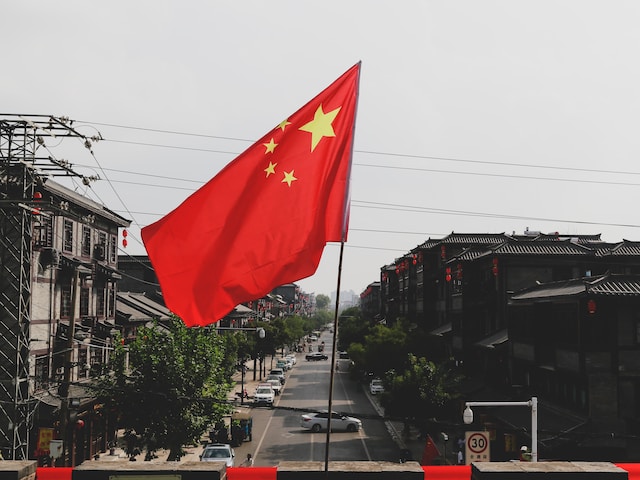
On 24 March 2023, the antitrust authority in China – the State Administration for Market Regulation (SAMR) – published four implementing regulations (hereinafter referred to as “Regulations”), in order to ensure the correct and orderly implementation of the amendments to the Anti-Monopoly Law (hereinafter referred to as AML) of June 2022. The Regulations entered into force on 15 April 2023.
Main aspects
On 24 March 2023, the SAMR published four new regulations for the implementation of the amendments to the AML of June 2022, when six drafts were published for public comment. Four of the six drafts have been approved by the Chinese authority, with the relevant implementing regulations entered into force on 15 April 2023.
Whilst the new regulations clarify important concepts included in the AML of 2022, many questions remain to be addressed.
Specifically, the regulations concern:
Anti-monopoly agreements (禁止垄断协议规定 – Regulation Prohibiting Monopoly Agreements);
Review on concentration between business operators (经营者集中审查规定 – Regulation on the Review of Concentrations between Business Operators);
Abuse of dominant market position (禁止滥用市场支配地位行为规定 – Regulation Prohibiting Conduct Abusing a Dominant Market Position);
Abuse of administrative power to eliminate or restrict the competition (滥用行政权力新规 – Regulation Preventing Conduct Abusing Administrative Powers to Eliminate or Restrict Competition).
1. Regulation Prohibiting Monopoly Agreements
With reference to anti-competitive agreements, the AML introduced for the first time the “safe harbour” system, i.e. a system based on certain market thresholds set by law, below which the acts of a business operator are considered to be of little relevance for the elimination or restriction of competition. The draft of the AML submitted in 2022 initially proposed 15% as a fixed market share threshold for the application of the so-called “safe harbour”. However, in the final text it is not mentioned a specific limit applicable to all situations, although it provides some parameters for its identification based on the industry, horizontal and vertical agreements, etc.
The Regulation also clarifies the concepts of “organization” and “material assistance”, which respectively involve playing a decisive or otherwise principal role in the conclusion of anti-competitive agreements and providing support for the same purposes.
Further aspects introduced by the AML and better defined by the recent Regulation concern:
– The illegitimacy of the so-called “hub and spoke agreement”, with the further definition of the criteria for its identification;
– The introduction of the concept of “potential competitors”, which together with the actual competitors shall be evaluated during the market analysis phase;
– The broadening of the scope of the so-called “leniency system” (which refer to a situation of tolerance in the context of antitrust rules application).
2. Regulation on the review of concentration between business operators
The provisions introduced on merger control, and in particular Art. 5 of the Regulation, have the main purpose of clarifying the criteria to be taken into account when determining the actual control (or influence) exercised by one operator over others.
The provisions contained within this regulation also contribute to the determination of the criteria for:
the identification of the “implementation of concentration”;
the calculation of turnover under common control;
integration of new investigation methods that may be adopted in the examination of concentrations by antitrust agencies.
3. Abuse of dominant market position
With reference to the abuse of a dominant market position, the Regulation introduces a series of provisions aimed at increasing the efficiency of the regulatory framework regulating competition, with particular attention to the so-called “platform economy”.
In order to assess a “dominant position”, the Regulation identifies specific factors to be evaluated, such as, for example, the volume of transactions, but in particular the ability of the platform to control the volume of online traffic. Any use of the collected data to engage in conduct that could disrupt normal competition on the market is also prohibited.
4. Administrative Monopoly Regulation
In line with the amendments introduced in 2022, the Regulation maintains important provisions which focus on countering possible abuses of administrative power aimed at eliminating or restricting competition. In particular, it provides some examples of abuse of administrative power while introducing investigative measures and protective procedures for its detection.
Conclusion
Although the Regulations clarify various aspects already proposed under the consultation drafts of 2022, supporting companies in the correct compliance with the Anti-Monopoly Law, many issues remain open (e.g. the market threshold under the “safe harbour” system or the applicability of this system in vertical agreements, etc.).
With a view to the continuous enforcement of competition law in China, it is therefore advisable for companies operating in this market to keep abreast of future developments in order to constantly define their own antitrust strategies and compliance policies.
China Desk – Zunarelli Law Firm








